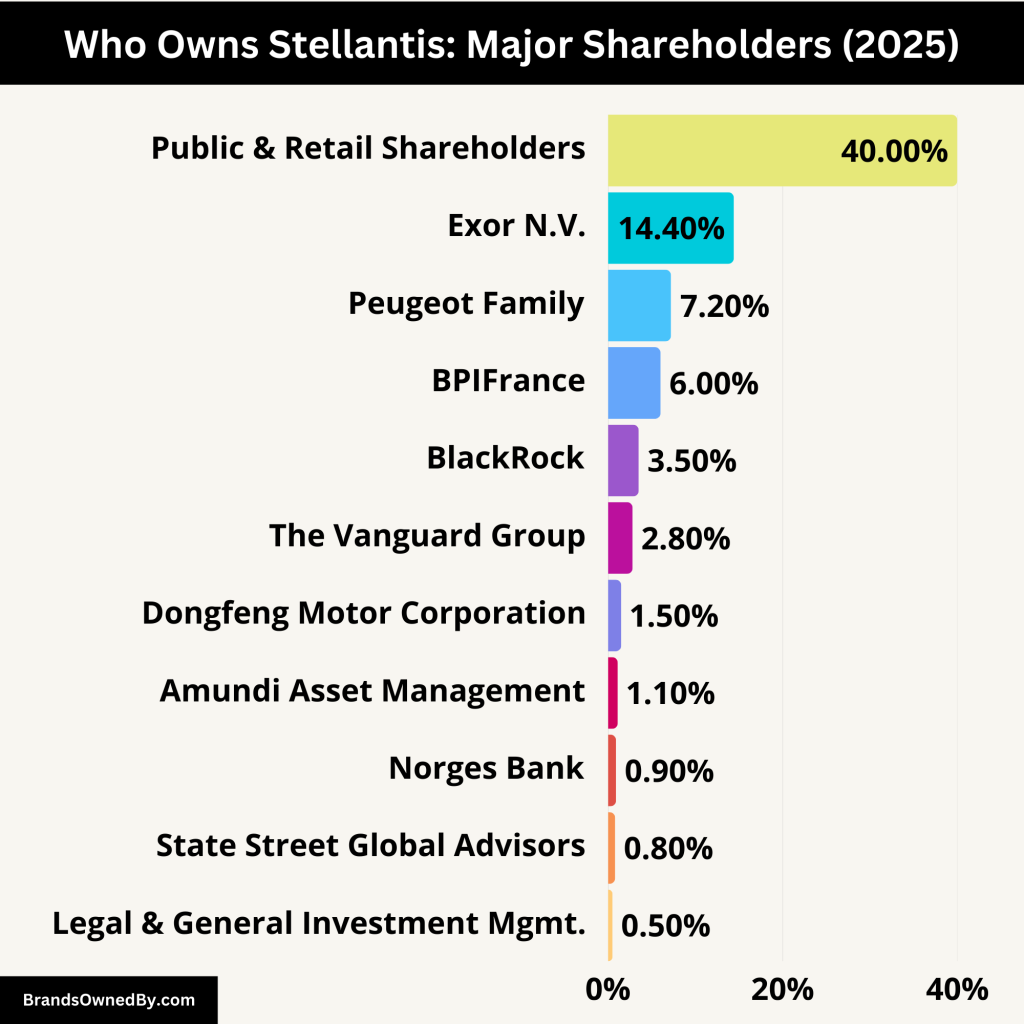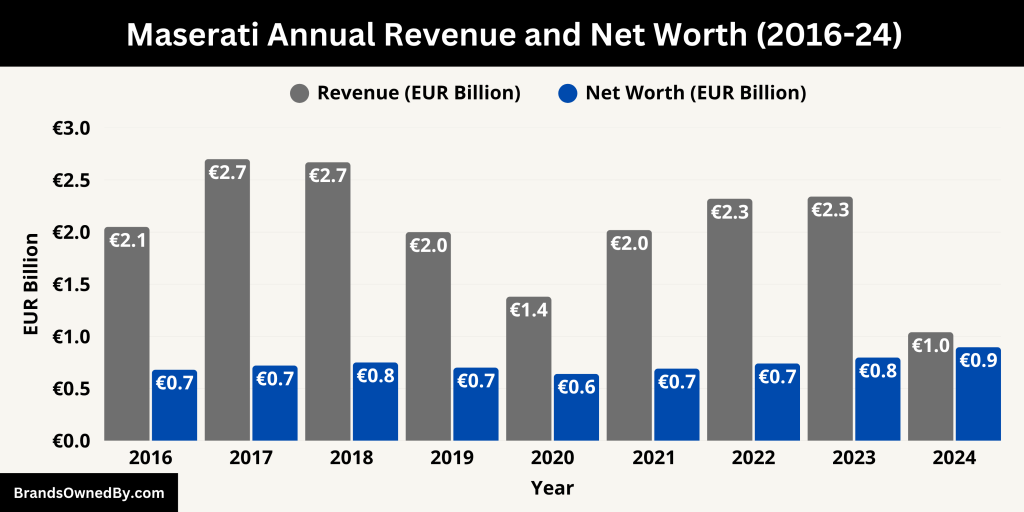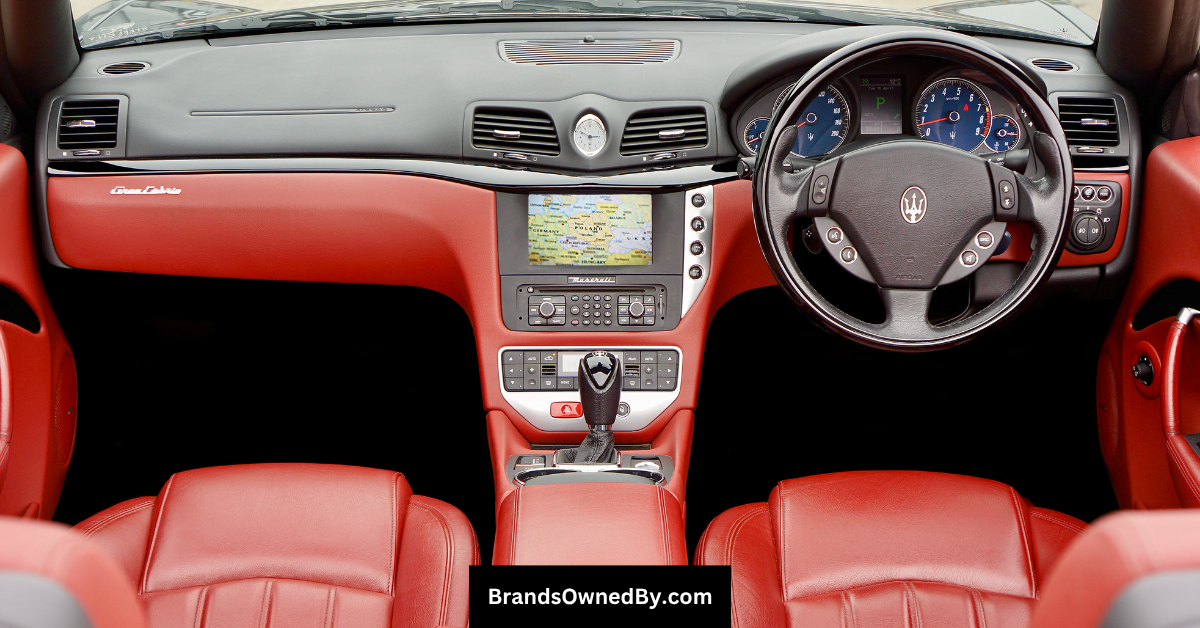Maserati is one of the most recognizable names in luxury sports cars. But many fans and buyers often wonder, who owns Maserati today? The brand has changed hands several times, and its current ownership might surprise you.
History of Maserati
Maserati was founded in 1914 in Bologna, Italy, by the Maserati brothers—Alfieri, Ettore, and Ernesto. The company started as a workshop for building race cars. Over the decades, Maserati became known for combining Italian elegance with high-speed performance.
In 1937, the company was sold to the Adolfo Orsi family, which moved its headquarters to Modena. From there, Maserati went through many phases. It partnered with and was owned by several automotive giants, including Citroën in the 1960s, De Tomaso in the 1970s, and Fiat in the 1990s.
By the early 2000s, Maserati joined Ferrari under the Fiat Group umbrella. However, this setup was temporary, and further corporate restructuring would eventually place Maserati under a broader group.
Who Owns Maserati?
Maserati is currently owned by Stellantis N.V., a multinational automotive group headquartered in Amsterdam, Netherlands. Stellantis was created in January 2021 through the merger of Fiat Chrysler Automobiles (FCA) and Groupe PSA, the parent company of Peugeot, Citroën, and Opel. Maserati now functions as a premium brand within Stellantis’ vast portfolio.
Parent Company: Stellantis N.V.

Stellantis N.V. is one of the largest car manufacturers in the world by volume and revenue. The company owns 14 iconic automotive brands including Jeep, Dodge, Fiat, Peugeot, Citroën, Opel, Alfa Romeo, and Maserati. The merger allowed Stellantis to pool resources, technologies, and markets while maintaining each brand’s individual identity.
Stellantis is a publicly traded company, listed on three major stock exchanges:
- New York Stock Exchange (STLA)
- Euronext Paris
- Borsa Italiana (Milan)
Although Maserati is fully owned by Stellantis, it operates with significant autonomy in terms of design, marketing, and product development, especially since it serves a niche luxury performance market.
Acquisition History of Maserati
Maserati has experienced several ownership changes over its 100+ year history:
- 1937: The founding Maserati family sold the company to Adolfo Orsi, who moved the headquarters to Modena, Italy.
- 1968: French automaker Citroën acquired Maserati. This partnership led to technological innovation but financial difficulties.
- 1975: After Citroën’s bankruptcy, Argentine entrepreneur Alejandro de Tomaso took control of Maserati with backing from the Italian government.
- 1993: Italian giant Fiat S.p.A. acquired Maserati, incorporating it into its growing automotive portfolio.
- 1997–2005: Maserati was placed under Ferrari, a Fiat subsidiary at the time. Ferrari helped elevate the brand’s engineering and design standards.
- 2005 onwards: Maserati was separated from Ferrari and brought back under Fiat’s direct control. It later became part of Fiat Chrysler Automobiles (FCA) in 2014.
- 2021: FCA merged with PSA Group to form Stellantis N.V., making Stellantis the current and complete owner of Maserati.
Stellantis’ Strategy with Maserati
Stellantis treats Maserati as a distinct luxury and performance brand, similar to how the Volkswagen Group manages Porsche or Audi. The goal is to revitalize Maserati’s global appeal by focusing on electrification, design, and performance. Maserati has launched and announced several new electric models as part of its “Maserati Folgore” strategy, targeting premium EV buyers.
Stellantis has made it clear that Maserati will not be merged with Alfa Romeo or Peugeot, even though the brands may share platforms or components. Maserati remains a standalone luxury marque within the Stellantis ecosystem.
Other Relevant Ownership Details
- No spin-offs planned: Unlike Ferrari, which was spun off from Fiat Chrysler in 2015, Maserati will remain under Stellantis and not be made a separate public company.
- Strategic independence: Maserati has its own headquarters in Modena and design centers in Italy. It also controls its own R&D, even though it may use some Stellantis-wide technologies.
- Electric future: Maserati is being positioned as the luxury electrified face of Stellantis. The upcoming electric versions of its Levante, GranTurismo, and Quattroporte will shape its next growth phase.
Who is the CEO of Maserati?
As of 2025, Davide Grasso remains the Chief Executive Officer (CEO) of Maserati. He has been leading the company through a critical period of reinvention, focusing on electrification, brand repositioning, and global expansion. Under his leadership, Maserati has launched several new models and initiated its full-electric vehicle lineup under the “Folgore” (Italian for “lightning”) banner.
Background of Davide Grasso
Davide Grasso was appointed CEO of Maserati in July 2019. Before joining Maserati, he had an extensive career in brand management and marketing. Notably, Grasso served as the Chief Marketing Officer (CMO) of Nike, where he was responsible for global marketing strategies and consumer engagement.
His transition from a global apparel brand to a historic automotive marque reflected Stellantis’ vision of turning Maserati into a lifestyle-oriented luxury brand, not just a car manufacturer.
Grasso’s international experience and brand expertise made him a strong fit to reposition Maserati in the highly competitive premium segment. His leadership has been crucial in steering the brand through a modern transformation without losing its Italian heritage.
Leadership Style and Strategic Focus
Grasso emphasizes innovation, customer experience, and brand storytelling. His leadership style focuses on:
- Design Excellence: He believes Maserati’s design should reflect Italian culture, elegance, and emotion. This is visible in the revamped MC20, Grecale, and upcoming EVs.
- Electrification: Grasso is overseeing the rollout of Maserati’s first all-electric vehicles, with the aim for 100% electric models by 2030.
- Performance with Luxury: His strategy maintains the balance between performance engineering and luxury craftsmanship, a hallmark of Maserati’s DNA.
- Global Expansion: Grasso has pushed for stronger market presence in North America, China, and the Middle East, while reinforcing Maserati’s European roots.
Maserati’s Executive Structure
Maserati operates with a relatively independent management team within Stellantis. While Stellantis sets broader strategic goals and investment directions, day-to-day decisions, branding, R&D, and model strategy are handled by Maserati’s own executive board, led by Grasso.
Grasso works closely with other top Stellantis leaders and reports to Carlos Tavares, the CEO of Stellantis. This structure allows Maserati to operate as a focused luxury brand while benefiting from Stellantis’ shared platforms and technological advancements.
Key Executives Working with Grasso
Some key figures working alongside Davide Grasso include:
- Francesco Tonon – Head of Global Product Planning.
- Jean-Philippe Leloup – Managing Director of Maserati Europe.
- Federico Landini – Head of Maserati Engineering and Product Development.
Together, this leadership team has been tasked with transforming Maserati into a profitable and future-ready brand.
Past CEOs of Maserati
Maserati has had several CEOs in the past decade. Some of the recent notable leaders include:
- Harald Wester (multiple terms: 2008–2016 and again in 2018) – Known for expanding Maserati’s model lineup and boosting global sales during the early 2010s.
- Reid Bigland (2016–2018) – A Fiat Chrysler executive who briefly led Maserati while also overseeing other North American operations.
- Roberto Ronchi (early 2000s) – Led Maserati during its transitional period post-Ferrari partnership.
Each CEO brought a different approach, but Grasso stands out for leading the company into the electric age while redefining its luxury image.
The Road Ahead Under Grasso
Under Davide Grasso’s leadership in 2025, Maserati is entering a bold new era. The company is preparing for the launch of the Folgore GranCabrio, expanding the MC20 line, and building momentum in the electric SUV market. With a balance of style, performance, and cutting-edge technology, Grasso’s Maserati is setting the stage for a new generation of luxury car buyers.
Who Builds Maserati Engines?
Maserati has a long legacy of building and sourcing high-performance engines. Over the years, the company has shifted from relying on partners to developing its own powertrains in-house. As of 2025, Maserati produces most of its engines independently, though some collaborations still exist.
In-House Engine Development
Since 2020, Maserati has focused on building its engines internally, marking a significant shift in its strategy. The brand now manufactures its engines at its Modena plant in Italy, a facility known as the Maserati Engine Lab. This site is fully dedicated to the research, development, and production of high-performance powertrains.
The most notable in-house engine is the Nettuno V6, a twin-turbocharged 3.0-liter unit developed entirely by Maserati engineers. It debuted in the MC20 supercar and represents a milestone, as it was the first Maserati-developed engine in over two decades.
Key features of the Nettuno engine
- 3.0-liter twin-turbo V6
- 621 horsepower
- Features F1-style pre-chamber combustion technology
- Built entirely at Maserati’s Modena facility
The Nettuno engine has since been adapted for other Maserati models, including certain high-performance versions of the GranTurismo and Grecale Trofeo.
Ferrari-Sourced Engines (Historical Role)
From the early 2000s until 2022, many Maserati vehicles were powered by Ferrari-built engines. These engines were manufactured at Ferrari’s facility in Maranello under a long-standing partnership.
Key Ferrari engines used in Maserati models included:
- 4.2L and 4.7L V8s used in GranTurismo, Quattroporte, and older Ghibli models
- 3.0L V6 twin-turbo engines in earlier Levante and Ghibli models
This relationship ended after Maserati decided to take full control of its engine development, coinciding with its exit from Ferrari ownership under the Fiat Chrysler Automobiles (FCA) group, now Stellantis.
Electric Powertrains – Folgore Line
With the launch of the Folgore electric sub-brand, Maserati has begun building its own electric drivetrains in partnership with other Stellantis EV platforms. While the motors and battery systems are assembled using Stellantis Group technologies, Maserati tunes and customizes the power delivery and driving dynamics to suit each vehicle’s performance profile.
- Folgore models, such as the GranTurismo Folgore and Grecale Folgore, feature:
- In-house software calibration for a sporty, Maserati-specific feel
- 800V architecture for ultra-fast charging
- Three electric motors delivering over 750 hp.
Annual Revenue and Net Worth of Maserati

In 2025, Maserati is projected to generate approximately €1.9 billion in global revenue. This marks a recovery from the significant downturn experienced in 2024, where revenues fell to €1.04 billion, a sharp decline from €2.335 billion in 2023. The 2024 slump was attributed to a 57% drop in global sales, totaling just 11,300 vehicles, down from 26,600 units the previous year.
The United States remains Maserati’s most lucrative market, expected to contribute around €1.5 billion in revenue for 2025. This resurgence is driven by the launch of new models and a strategic focus on key markets.
2025 Net Worth
As of early 2025, Maserati’s estimated net worth stands at approximately €996 million, reflecting a gradual increase from €896 million in 2024 and €797 million in 2023. This valuation considers the brand’s assets, market position, and projected earnings.
Despite the challenges faced in 2024, including a €260 million loss, Maserati’s strategic initiatives in electrification and product diversification have positioned the company for a more stable financial outlook in 2025.
Here is a detailed table showing Maserati’s annual revenue and estimated net worth over the last 10 years (2016–2025):
| Year | Revenue (€ Billion) | Estimated Net Worth (€ Million) | Key Notes |
|---|---|---|---|
| 2025 | 1.90 (projected) | 996 | Recovery driven by EV launches, U.S. market focus |
| 2024 | 1.04 | 896 | Major drop in deliveries and profit loss (€260M) |
| 2023 | 2.34 | 797 | Strong performance from MC20 and Grecale |
| 2022 | 2.32 | 740 | Continued post-pandemic rebound |
| 2021 | 2.02 | 690 | Strong recovery year post-COVID |
| 2020 | 1.38 | 640 | Pandemic-related disruption, launch of MC20 |
| 2019 | 2.0 | 700 | Transition year with falling sales |
| 2018 | 2.67 | 750 | Peak sales year with Levante SUV success |
| 2017 | 2.70 | 720 | Expansion into Asia-Pacific boosted revenue |
| 2016 | 2.05 | 680 | Growth driven by Ghibli and Quattroporte |
Brands Owned by Maserati
As of 2025, Maserati operates as a luxury automotive brand under the Stellantis N.V. umbrella. While Maserati does not own other companies or brands, it has developed a range of models and sub-brands that define its identity in the luxury automotive sector. Additionally, Maserati collaborates with various partners to enhance its offerings.
Here’s a detailed overview of brands owned by Maserati:
| Company/Brand/Program | Description | Notes |
|---|---|---|
| GranTurismo | Luxury grand tourer available in petrol and electric (Folgore) variants | Revived in 2023 as part of Maserati’s modern lineup |
| Grecale | Mid-size luxury SUV offered in ICE and EV (Folgore) formats | Designed to compete with Porsche Macan and BMW X3 |
| GranCabrio | Convertible version of the GranTurismo | Reintroduced with updated styling and electric option |
| MC20 | High-performance supercar with V6 engine; electric Folgore model coming | Represents Maserati’s racing DNA and technology lead |
| Quattroporte | Flagship full-size luxury sedan | All-electric version expected by 2028 |
| Levante | Luxury performance SUV; will be succeeded by an electric SUV | Maserati’s first SUV, launched in 2016 |
| Folgore | Sub-brand for all-electric vehicles | All models to have a Folgore variant by 2025 |
| Fuoriserie | Customization and personalization program | Offers bespoke trims, interiors, and finishes |
| Sonus faber (partner) | Premium Italian audio partner for Maserati interiors | Supplies high-end sound systems, especially for EVs |
| Marchesi Antinori (partner) | Italian winemaker partner for limited-edition Fuoriserie models | Example: Tignanello-themed Maserati designs |
Maserati GranTurismo
The GranTurismo is a flagship grand tourer that embodies Maserati’s commitment to performance and luxury. The latest generation, introduced in 2023, offers both internal combustion engine (ICE) and electric variants. The GranTurismo Folgore, the electric version, features advanced electric propulsion technology, aligning with Maserati’s electrification strategy.
Maserati Grecale
The Grecale is Maserati’s mid-size luxury SUV, positioned below the Levante. Launched in 2022, it combines practicality with performance. The Grecale Folgore, its electric variant, was introduced in 2024, offering a sustainable option without compromising on driving dynamics.
Maserati GranCabrio
The GranCabrio is the convertible counterpart to the GranTurismo, offering open-top luxury and performance. The latest iteration maintains Maserati’s design language and is available with both ICE and electric powertrains.
Maserati MC20
The MC20 is Maserati’s super sports car, marking a return to the brand’s racing roots. Introduced in 2020, it features a carbon-fiber monocoque and a twin-turbo V6 engine. An electric version, the MC20 Folgore, is slated for release in 2025, showcasing Maserati’s commitment to high-performance electrification.
Maserati Quattroporte
The Quattroporte is Maserati’s full-size luxury sedan, known for its blend of performance and comfort. While the current generation continues with ICE options, an all-electric version is planned for 2028, aligning with the brand’s goal of full electrification by the end of the decade.
Maserati Levante
The Levante is Maserati’s first SUV, combining the brand’s performance heritage with SUV practicality. As part of the electrification plan, the Levante is set to be replaced by a new electric SUV model by 2027, continuing Maserati’s presence in the luxury SUV segment.
Maserati Folgore
“Folgore,” meaning “lightning” in Italian, is Maserati’s sub-brand dedicated to electric vehicles. Under the Folgore banner, Maserati plans to offer electric versions of all its models by 2025, with a complete transition to electric-only vehicles by 2028. This initiative underscores Maserati’s commitment to sustainability and innovation.
Maserati Fuoriserie
Fuoriserie is Maserati’s customization program, allowing clients to personalize their vehicles extensively. Through Fuoriserie, customers can select unique colors, materials, and finishes, creating bespoke vehicles that reflect their individual tastes. This program enhances the exclusivity and personalization associated with the Maserati brand.
Strategic Partnerships
Maserati collaborates with various partners to enhance its vehicle offerings:
- Sonus faber: An Italian audio manufacturer providing premium sound systems for Maserati vehicles, delivering an immersive auditory experience.
- Marchesi Antinori: A renowned Italian winery that partnered with Maserati’s Fuoriserie program to create a special edition vehicle celebrating the 50th anniversary of Tignanello wine.
These partnerships reflect Maserati’s dedication to Italian craftsmanship and luxury, extending beyond automotive engineering into lifestyle experiences.
Final Words
Maserati, once a small family-run Italian brand, is now part of a global powerhouse—Stellantis. So, if you’re wondering who owns Maserati, the answer lies with one of the world’s largest car manufacturers.
While Stellantis provides corporate support and global reach, Maserati maintains its own identity, design, and performance DNA. With renewed focus on electrification and innovation, Maserati is aiming for a bold future while staying true to its racing roots.
FAQs
Who owns Maserati in 2024?
Maserati is owned by Stellantis N.V., a multinational automotive group formed in 2021.
Does Fiat own Maserati?
Fiat used to own Maserati through Fiat Chrysler Automobiles. After the merger with PSA Group, ownership passed to Stellantis.
What is the value of Maserati?
Maserati is estimated to be worth between €4 billion and €6 billion based on brand equity and performance.
Is Maserati a luxury brand?
Yes, Maserati is considered a luxury and performance automotive brand, competing with companies like Porsche and Jaguar.
Is a Maserati made by Ferrari?
No, Maserati is not made by Ferrari. While Ferrari supplied engines to Maserati from the early 2000s until 2022, Maserati is a separate brand. As of 2025, Maserati builds its own engines and vehicles independently under the Stellantis group.
Who is the parent brand of Maserati?
Maserati’s parent brand is Stellantis N.V., a global automotive group formed in 2021 from the merger of Fiat Chrysler Automobiles (FCA) and Groupe PSA.
Who designed Maserati?
Maserati vehicles have historically been designed by top Italian design houses such as Pininfarina, Giugiaro, and Zagato. More recently, Maserati’s in-house Centro Stile design team has led the styling of models like the MC20, Grecale, and new GranTurismo.
Is a Maserati a V8?
Some Maserati models, especially older ones like the Quattroporte GTS and GranTurismo, were equipped with Ferrari-built V8 engines. However, newer models use Maserati’s own Nettuno V6 or electric drivetrains. As of 2025, Maserati is phasing out V8 engines.
Is a Ferrari California a Maserati?
No, the Ferrari California is a Ferrari model, not a Maserati. However, both brands were once under the same parent group (FCA), and some components—especially early platform elements—were shared.
Who built Maserati?
Maserati was founded in 1914 in Bologna, Italy, by the Maserati brothers—Alfieri, Bindo, Carlo, Ettore, and Ernesto. The company has since evolved into a luxury performance brand based in Modena, Italy.
When did Maserati leave Ferrari?
Maserati ended its engine supply and production relationship with Ferrari in 2022, marking a complete transition to Maserati-developed powertrains and EV technologies.
Is Maserati owned by Ferrari?
No, Ferrari does not own Maserati. Ferrari and Maserati were both part of the Fiat Chrysler group, but they are now separate companies. Maserati is fully owned by Stellantis.
Who owns Maserati GranTurismo?
The Maserati GranTurismo is a model owned and produced by Maserati, which is a brand under Stellantis. Individual ownership belongs to whoever buys the car, but the model is developed and sold by Maserati.
Does Chrysler own Maserati?
No. Chrysler does not own Maserati. Both were once under Fiat Chrysler Automobiles (FCA), but since 2021, they have been part of Stellantis, the merged group. Chrysler and Maserati are now sister brands under the same corporate umbrella.
Is Maserati owned by VW?
No, Maserati is not owned by Volkswagen (VW). It is owned by Stellantis. VW Group owns brands like Audi, Lamborghini, Porsche, and Bentley—not Maserati.
Maserati is made in which country?
Maserati vehicles are made in Italy. Key production sites include Modena, Turin (Mirafiori), and Cassino.
Maserati is from which country?
Maserati is from Italy. The company was founded in Bologna and is now headquartered in Modena. It remains a proud icon of Italian automotive craftsmanship.

